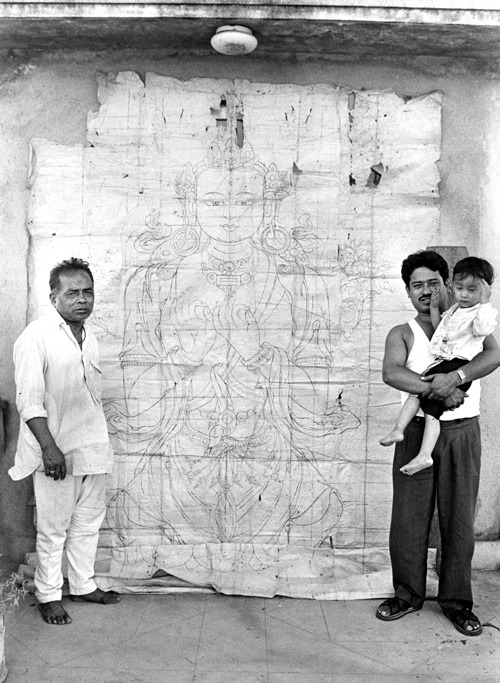 ? ?
? ?
Like all enlightened beings, Maitreya has a beautiful body with perfect proportions and distinctive attributes. Images of such beings must be accurate to be worthy of worship and effective in rituals.
The copper sculpture of Maitreya made from this preparatory drawing was a complicated, multipart construction. Its pieces were designed in a workshop, cast separately in Nepal, and assembled in the commissioning monastery in Bhutan.
To create this drawing, the workshop’s senior artist sketched the body in pencil until he got it right. He then used brush and ink to render the correct form. He inked in only half of the jewelry, knowing that the other artists on his team could reverse and replicate the details. The grid was part of the process as well: it enabled the artists to more accurately transfer the image from paper to copper.
Sculpture of Maitreya at Tongsa Dzong, Central Bhutan; likely based on drawing of Maitreya (S1998.1); Courtesy of Françoise Pommaret and Mary Slusser; Amitabha (S2014.20)

This drawing has traveled a long way from the artisan quarters of Patan, Nepal. For fifty years, it was folded and stored atop a cabinet in a sculptor’s home. Dust and dirt took their toll, and insects bore holes in it.
In 1997, while traveling in the Kathmandu Valley, Mary Slusser, a Freer|Sackler research associate, recognized the value of this drawing: it is one of only five remaining drawings by the renowned artist Kuber Singh Shakya. She urged the family to donate the work to the museums so it could be preserved. The family agreed, and Slusser hand-carried the drawing from Nepal to Washington, DC.
Family of the artist Kuber Singh Shakya next to drawing of Maitreya (S1998.1); 1997; Courtesy of Mary Slusser